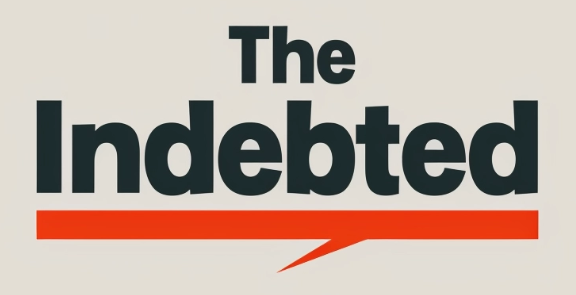Understanding the Impact of Your Debt-to-Income Ratio is crucial for managing your financial health. Your Debt-to-Income Ratio (DTI) is the percentage of your monthly gross income that goes towards paying off your debts. It is a key factor that lenders consider when assessing your creditworthiness. A high DTI indicates that you may have a harder time paying off your debts, and this may lower your chances of getting approved for loans or credit.
Managing your DTI is essential for staying financially sound. A lower DTI means that you have more disposable income to pay off your debts and save for the future. It is important to keep your DTI below 36%, as this is the threshold that most lenders consider acceptable. By keeping your DTI low, you can improve your credit score, which can lead to better loan terms and lower interest rates.
Understanding Debt-to-Income Ratio
As someone who is interested in personal finance, it is important to understand the concept of debt-to-income ratio (DTI). In this section, I will provide a brief overview of DTI, its components, and its importance in personal finance.
Defining DTI
DTI is a financial metric that compares an individual’s monthly debt payments to their gross monthly income. It is expressed as a percentage and is calculated by dividing the total monthly debt payments by the gross monthly income. The resulting percentage is the DTI.
Components of DTI
DTI has two components: the front-end ratio and the back-end ratio. The front-end ratio is the percentage of gross monthly income that goes towards housing expenses, such as mortgage or rent payments. The back-end ratio is the percentage of gross monthly income that goes towards all debt payments, including housing expenses, credit card payments, and car loans.
The Importance of DTI in Personal Finance
DTI is an important metric in personal finance because it provides insight into an individual’s ability to manage debt. Lenders use DTI to determine whether an individual is eligible for a loan or credit. A high DTI indicates that an individual may have difficulty managing debt, while a low DTI indicates that an individual has a good handle on their debt.
Calculating DTI is a simple process that involves dividing the total monthly debt payments by the gross monthly income. The resulting percentage is the DTI. A DTI of 36% or less is considered good, while a DTI of 43% or more is considered high.
In conclusion, understanding DTI is an important aspect of personal finance. It provides insight into an individual’s ability to manage debt and is used by lenders to determine eligibility for loans and credit. By calculating DTI, individuals can gain a better understanding of their financial situation and make informed decisions about managing their debt.
Calculating Your DTI
As I mentioned earlier, your Debt-to-Income (DTI) ratio is a crucial factor that lenders consider when deciding whether to approve your loan or credit application. Therefore, it’s essential to understand how to calculate your DTI accurately.
The Calculation Process
To calculate your DTI, you need to divide your total monthly debt obligations by your gross monthly income, then multiply by 100 to get a percentage. The formula looks like this:
(Total Monthly Debt Obligations / Gross Monthly Income) x 100 = DTI
It’s crucial to note that your total monthly debt obligations include all your recurring debt payments, such as credit card payments, car loans, student loans, personal loans, mortgage payments, and any other debt you may have.
On the other hand, your gross monthly income is your total income before any deductions, such as taxes, insurance, or retirement contributions. It includes your salary, bonuses, commissions, and any other sources of income.
Examples of DTI Calculations
Let’s say you have a gross monthly income of $5,000 and the following monthly debt obligations:
- $1,200 for your mortgage payment
- $400 for your car loan
- $300 for your credit card payments
- $100 for your student loan
To calculate your DTI, you need to add up your total monthly debt obligations, which is $2,000, then divide it by your gross monthly income, which is $5,000, then multiply by 100.
($2,000 / $5,000) x 100 = 40%
In this case, your DTI is 40%, which is within the acceptable range for most lenders. However, it’s essential to note that different lenders have different DTI requirements, depending on the type of loan or credit you’re applying for.
In summary, understanding how to calculate your DTI accurately is crucial when applying for loans or credit. This knowledge helps you know your financial position and the likelihood of getting approved for credit.
Impact on Borrowing and Lending
As I mentioned earlier, the debt-to-income (DTI) ratio is an important factor that lenders consider when evaluating a borrower’s creditworthiness. In this section, I will discuss how the DTI ratio impacts borrowing and lending.
DTI’s Role in Loan Approval
When you apply for a loan, your lender will evaluate your DTI ratio to determine your borrowing risk. Generally, lenders prefer borrowers with a lower DTI ratio because it indicates that they have a lower debt burden and are more likely to repay their loans on time.
For example, mortgage lenders typically require a DTI ratio of 43% or less to approve a borrower for a mortgage. If your DTI ratio is higher than that, you may have a harder time getting approved for a mortgage or may need to pay a higher interest rate.
How Lenders Evaluate DTI
Lenders evaluate DTI by dividing your total monthly debt payments by your gross monthly income. Your gross monthly income is your income before taxes and other deductions are taken out.
For example, if you have a monthly income of $5,000 and your total monthly debt payments are $1,500, your DTI ratio would be 30% ($1,500 ÷ $5,000 = 0.3 or 30%).
Effects on Interest Rates and Loan Terms
Your DTI ratio can also impact the interest rate and loan terms you are offered. If you have a higher DTI ratio, you may be considered a higher risk borrower and may be offered a higher interest rate to compensate for that risk.
For example, if you have a DTI ratio of 40% and apply for a mortgage, you may be offered a higher interest rate than someone with a DTI ratio of 30%. Additionally, you may be required to pay a larger down payment or may be limited in the amount you can borrow.
In conclusion, understanding your DTI ratio is crucial when it comes to borrowing and lending. It can impact your ability to get approved for loans and the terms and interest rates you are offered. Keep your DTI ratio as low as possible to improve your creditworthiness and increase your chances of getting approved for loans.
Strategies to Improve Your DTI
If you have a high DTI ratio, there are several strategies you can use to improve it. These strategies include reducing your debt, increasing your income, and using debt management techniques.
Reducing Debt
One of the most effective ways to lower your DTI ratio is to reduce your debt. There are several ways to do this, including:
- Paying off your credit card balances: If you have credit card debt, paying it off can significantly lower your DTI ratio. Consider using the snowball or avalanche method to pay off your balances.
- Consolidating your debt: Consolidating your debt can make it easier to manage and pay off. Consider a personal loan or balance transfer credit card to consolidate your debts.
- Avoid taking on new debt: Avoid taking on new debt while you’re trying to lower your DTI ratio. This includes avoiding new credit cards, loans, or other types of debt.
Increasing Income
Another way to improve your DTI ratio is to increase your income. Here are some ways to do this:
- Get a second job: A second job can provide you with additional income to pay off debt and lower your DTI ratio.
- Negotiate a raise: If you’re employed, consider negotiating a raise with your employer.
- Start a side business: Starting a side business can provide you with additional income. Consider freelancing, selling goods online, or starting a consulting business.
Debt Management Techniques
Finally, there are several debt management techniques you can use to improve your DTI ratio. These include:
- Budgeting: Creating a budget can help you manage your money and pay off debt more effectively.
- Debt settlement: Debt settlement can help you negotiate with your creditors to lower your debt and improve your DTI ratio.
- Debt management plan: A debt management plan can help you pay off your debts more effectively by consolidating them into one monthly payment.
By using these strategies, you can lower your DTI ratio and improve your financial situation.
Long-Term Considerations
Maintaining a Healthy DTI
As I mentioned earlier, a healthy debt-to-income (DTI) ratio is crucial for good balance and debt management. However, it’s not enough to simply maintain a healthy DTI in the short term. You must also strive to maintain a healthy DTI in the long term. This means that you need to be aware of your spending habits and make sure that you’re not taking on too much debt.
One way to maintain a healthy DTI is to consolidate debt. Consolidating your debt can help you pay off your debts faster and reduce your monthly payments. This can help you maintain a healthy DTI and improve your credit score. However, before you consolidate your debt, make sure that you understand the terms of the loan and that you’re not taking on more debt than you can handle.
DTI and Your Financial Future
Your DTI ratio can have a significant impact on your financial future. If you have a high DTI, it can be difficult to save for retirement, invest, or achieve other financial milestones. This is why it’s important to maintain a healthy DTI and avoid taking on too much debt.
In addition to maintaining a healthy DTI, you should also be aware of your long-term financial goals. This can help you make wise financial decisions and avoid taking on debt that you can’t afford. For example, if you want to save for retirement, you should focus on paying off your debts and saving as much as you can each month.
Overall, maintaining a healthy DTI is crucial for good balance and debt management. By understanding the impact of your DTI on your personal finance and taking steps to maintain a healthy DTI in the long term, you can achieve your financial goals and secure your financial future.





